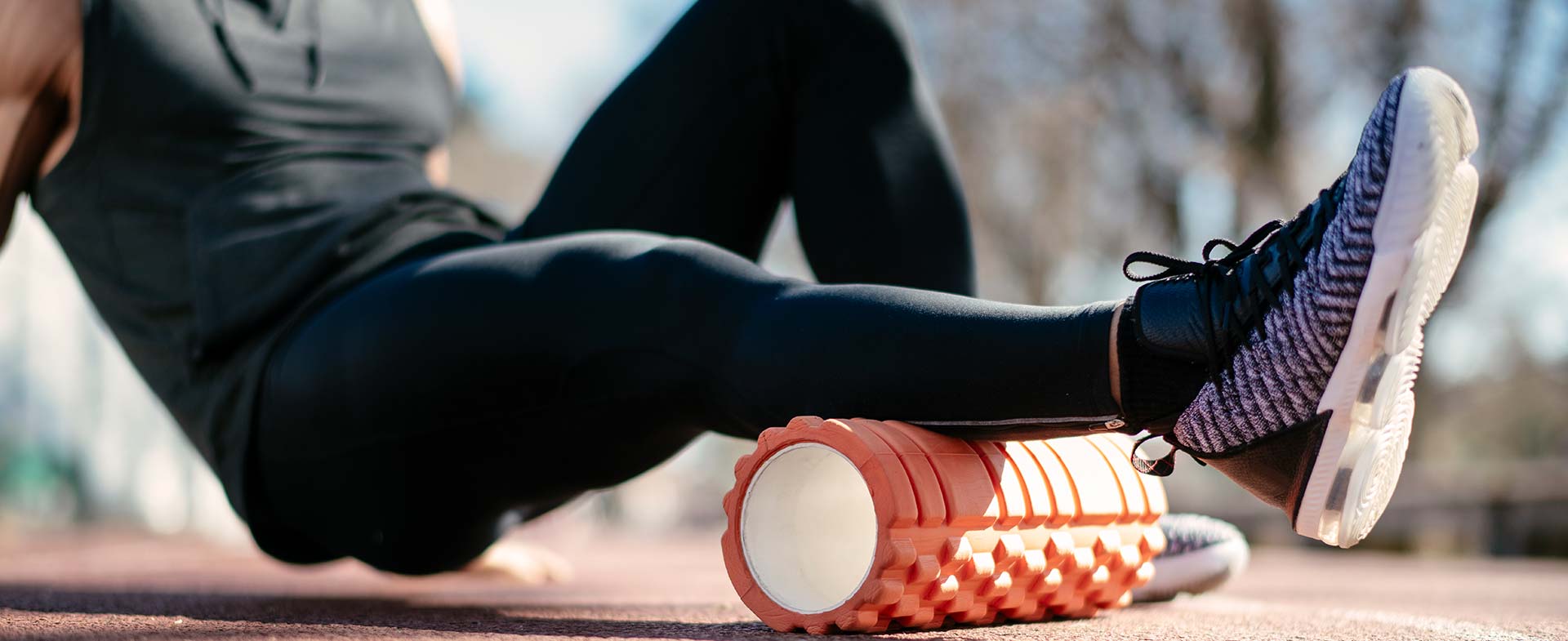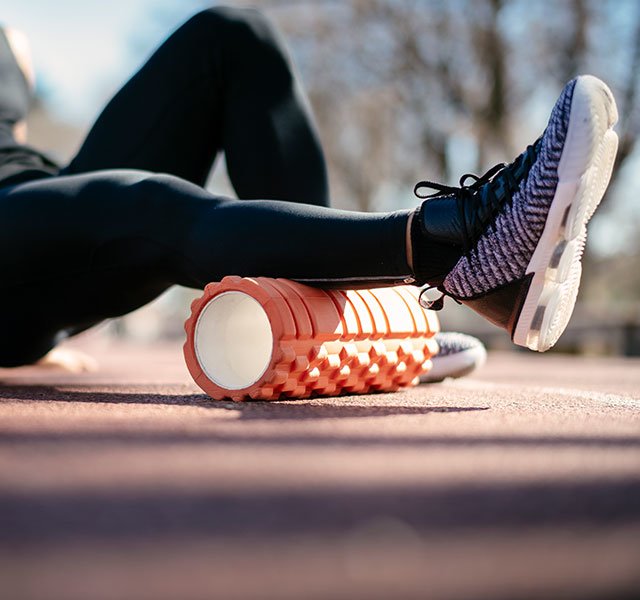If you haven't heard of foam rollers, you may be missing out on a critical workout tool. What was once a self-massage technique used by athletes and trainers, foam rolling has hit the mainstream. Not only can foam rollers help rehab injured muscles, they can also play a role in your warming up and cooling down before and after a workout.
Made of foam or plastic, these cylindrical muscle rollers come in a variety of sizes and densities. They act almost like a rolling pin for your body, smoothing out tight muscles. Used correctly, they can be a valuable component of any warm-up and cool-down routine.
Foam Rolling Basics
Using a foam roller helps improve circulation. That's one reason why foam rolling helps prime your body for a workout and helps your muscles recover afterward. Plus, since rolling breaks down knots and loosens tight muscles, it can help enhance range of motion.
Here's how it works: You position your body on the cylindrical roller (made of foam or flexible plastic) to put focused pressure on affected muscle groups. You can roll out your quads (muscles at the front of your thighs), glutes (the group of muscles that make up your butt), hamstrings (tendons and muscles at the back of your thighs), and even your back, hips and shoulder muscles.
To get the most out of your foam rolling routine, take these four steps:
- Select your style: There are a slew of foam rollers on the market, from low-density foam to rock-and-roll styles to vibrating rollers. If you're just dipping your toes into foam rolling, consider styles made with high-density foam. They're more durable and only cost about $10.
- Choose your size: You don't need a pricey, name-brand foam roller. I tend to use the 6-inch rollers because they're portable, however, there are rollers that extend the entire length of your spine. It boils down to personal preference.
- Get creative: There are so many ways you can use a foam roller. Use it to loosen up your hip flexors or roll out a specific body part that feels tight, like your biceps or calves. Use it to prime your body for a workout or cool down afterward. You can even incorporate it into core exercise routines.
- Keep it simple: Self-massage with a foam roller doesn’t have to be complicated. Divide the muscle that you’re rolling into three segments: bottom, middle and top. Do a few passes within each section, moving up and down, then move on to the next section. Finish off by giving the entire length of your muscle a pass. Even if you just give yourself a few minutes with a foam roller before and after a workout, you'll help mobilize stuck tissue.
Foam Rolling Your Way to Healthier Fascia
Muscle tissue lies within a capsule of fascia, the thin tissue that connects muscles. Healthy fascia is flexible and glides smoothly over your muscles. Unfortunately, there are plenty of ways to gum up your fascia, things like muscle injury, disease and repetitive movements. Even just sitting at a desk all day can negatively impact your fascia.
When fascia gets stiff, a foam roller can help smooth out the tissue and enhance mobility. That's one reason physical therapists and trainers recommend foam rolling after an injury. It helps "reset" tight areas. If you take a few minutes each day to foam roll, you can help prevent imbalance and overuse injuries.
When you land on a spot that’s especially painful or tight, pause and try to relax into it. Focus on the hot spot by rolling back and forth and side to side until you feel it soften and release (usually within 30 seconds or so). For more knotted areas, you can using try a tennis ball the same way. The key, of course, is to listen to your body. It might feel uncomfortable at first, but it should never hurt.
To find a doctor or athletic trainer at Henry Ford, visit henryford.com or call 1-800-HENRYFORD (436-7936).
Nick Parkinson, M.Ed., AT, ATC, TSAC-F Supervisor of Athletic Training with Henry Ford Sports Medicine, also leads Sports Performance training at the William Clay Ford Center for Athletic Medicine. Learn more about Nick.



